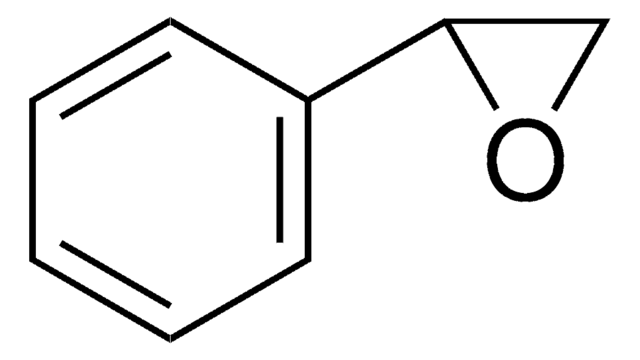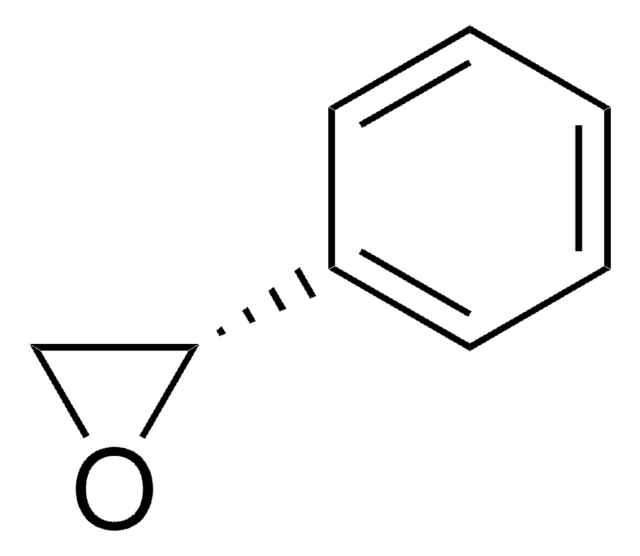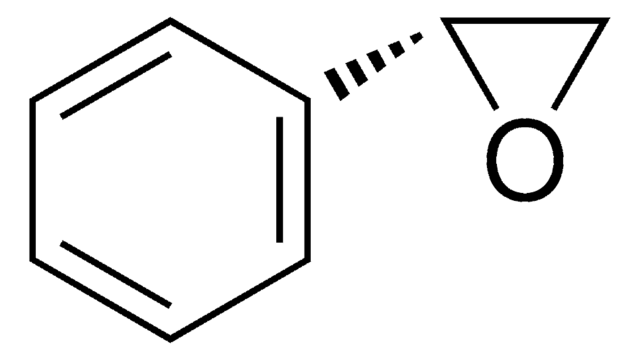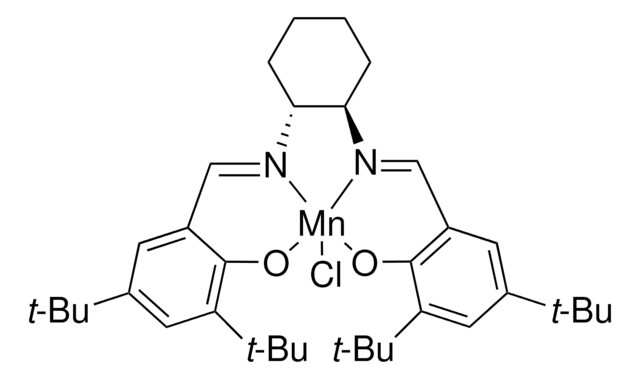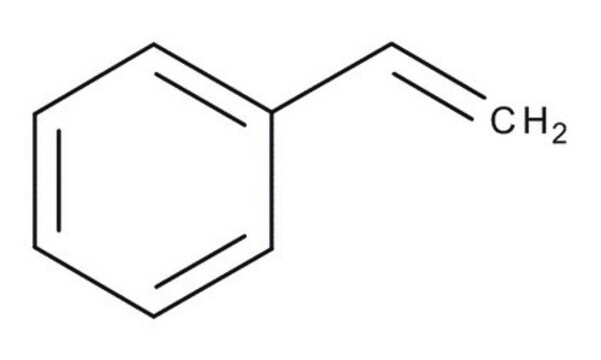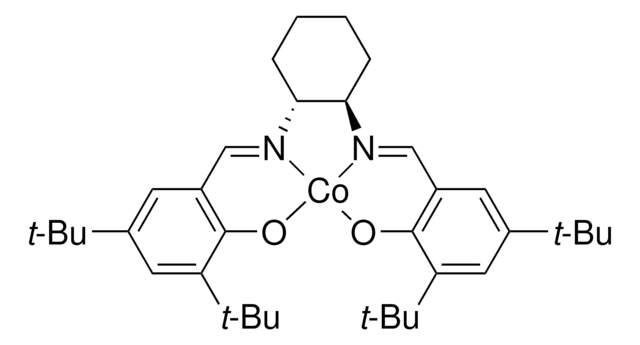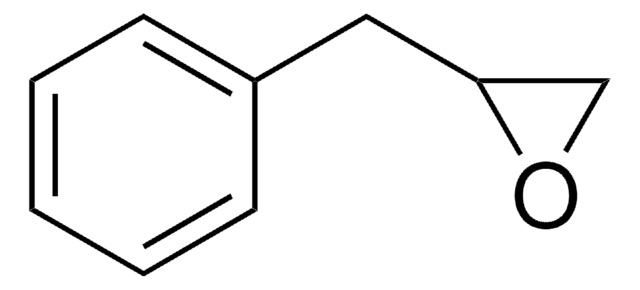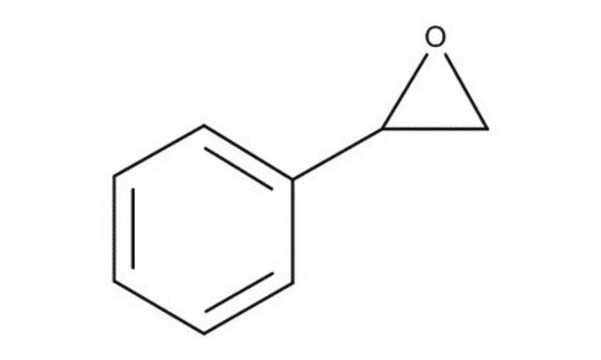Kluczowe dokumenty
726508
(R)-(+)-Styrene oxide
ChiPros®, produced by BASF, ≥98%
Synonim(y):
(R)-(+)-Phenyloxirane, (R)-Phenylethylene oxide
About This Item
Polecane produkty
klasa czystości
produced by BASF
Poziom jakości
Próba
≥98%
≥98.0% (GC)
Formularz
liquid
czystość optyczna
enantiomeric excess: ≥98.0%
granice wybuchowości
~22 %
współczynnik refrakcji
n20/D 1.534 (lit.)
bp
89-90 °C/23 mmHg (lit.)
gęstość
1.051 g/mL at 25 °C (lit.)
grupa funkcyjna
ether
phenyl
ciąg SMILES
C1O[C@@H]1c2ccccc2
InChI
1S/C8H8O/c1-2-4-7(5-3-1)8-6-9-8/h1-5,8H,6H2/t8-/m0/s1
Klucz InChI
AWMVMTVKBNGEAK-QMMMGPOBSA-N
Szukasz podobnych produktów? Odwiedź Przewodnik dotyczący porównywania produktów
Informacje prawne
Hasło ostrzegawcze
Danger
Zwroty wskazujące rodzaj zagrożenia
Zwroty wskazujące środki ostrożności
Klasyfikacja zagrożeń
Acute Tox. 4 Dermal - Carc. 1B - Eye Irrit. 2
Kod klasy składowania
6.1C - Combustible acute toxic Cat.3 / toxic compounds or compounds which causing chronic effects
Klasa zagrożenia wodnego (WGK)
WGK 3
Temperatura zapłonu (°F)
176.0 °F - closed cup
Temperatura zapłonu (°C)
80 °C - closed cup
Wybierz jedną z najnowszych wersji:
Certyfikaty analizy (CoA)
Nie widzisz odpowiedniej wersji?
Jeśli potrzebujesz konkretnej wersji, możesz wyszukać konkretny certyfikat według numeru partii lub serii.
Masz już ten produkt?
Dokumenty związane z niedawno zakupionymi produktami zostały zamieszczone w Bibliotece dokumentów.
Produkty
There are several alternative routes towards chiral aryl-substituted epoxides, among them Jacobsen’s asymmetric epoxidation1 or his hydrolytic kinetic resolution2 method, Sharpless’s asymmetric epoxidation3 using catalytic titan(IV)- isopropylate/diethyl tartrate complexes and tert-butylhydroperoxide
Nasz zespół naukowców ma doświadczenie we wszystkich obszarach badań, w tym w naukach przyrodniczych, materiałoznawstwie, syntezie chemicznej, chromatografii, analityce i wielu innych dziedzinach.
Skontaktuj się z zespołem ds. pomocy technicznej